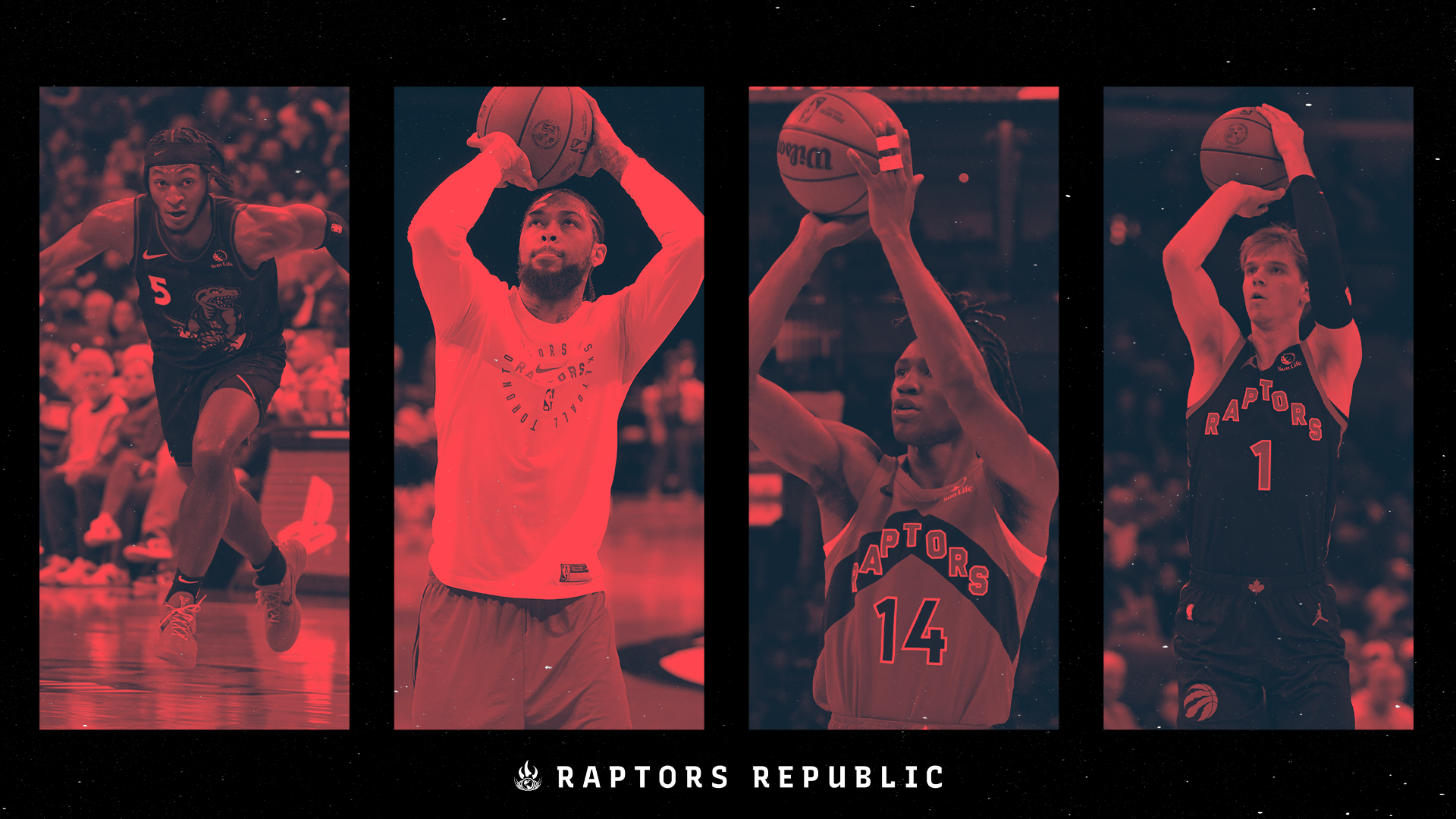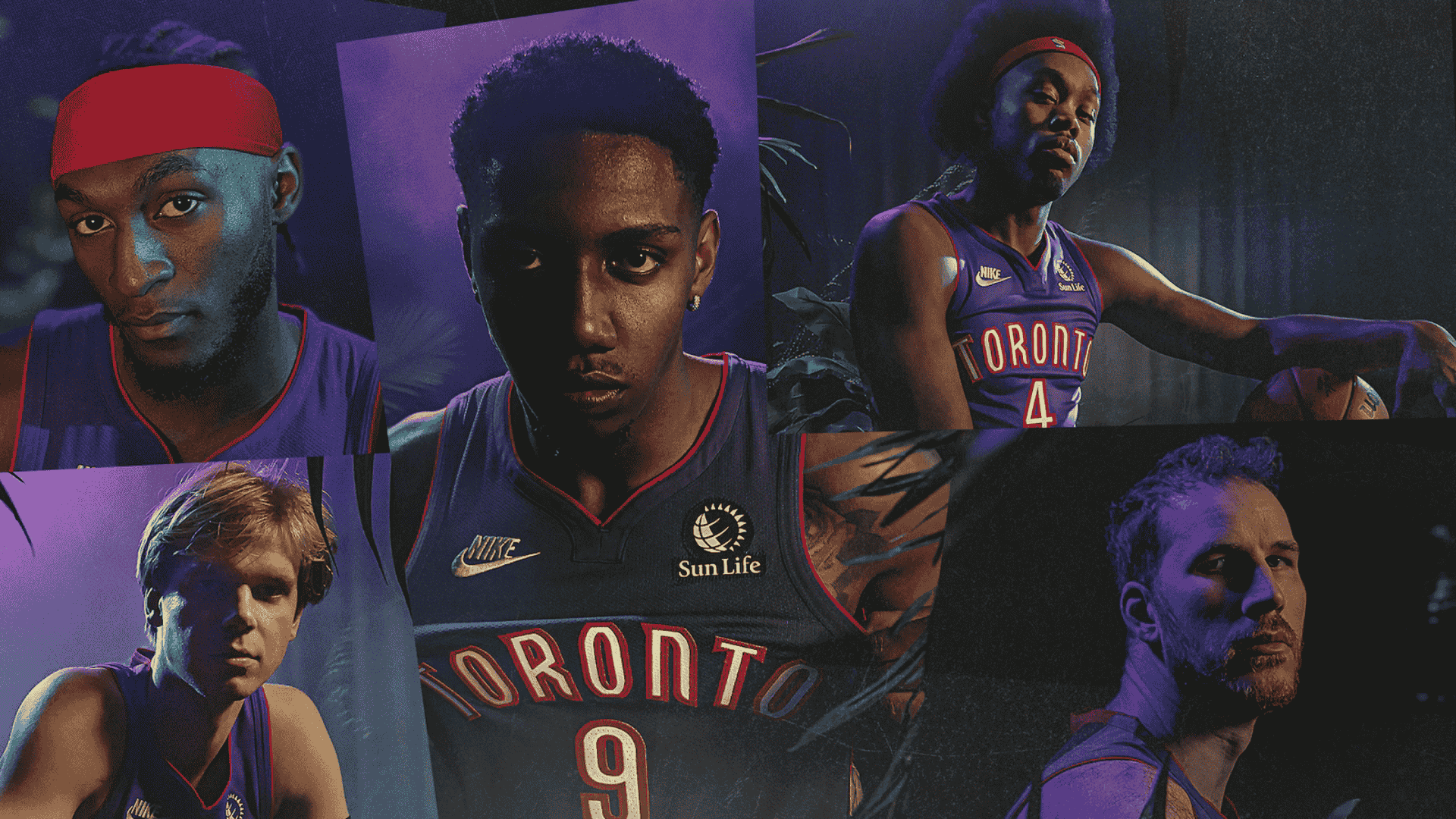The 2020-21 “Tampa Tank” is quickly becoming a forgotten chapter in the Raptors’ history book. When it is recollected, the memories are generally quite bitter. Virtual fans lining the empty seats of Amalie Arena. A starting lineup consisting of Aron Baynes, Freddie Gillespie and Khem Birch. Even Jalen Harris’s 30 ball is often reflected upon sardonically.
That fateful, Scottie Barnes-earning season was also the last time the Raptors were an above average 3-point shooting team, both by volume and efficiency. For the past four seasons they have ranked bottom 10 in both categories.
Going into the upcoming season, there is reason to believe that could change, both by way of taking and making more triples.
Now, 3-point shooting is not a prerequisite for success, nor does poor shooting always directly cause failure. Toronto was much better the following season in 2021-22 when they took less shots from distance and converted at a lower rate. The Denver Nuggets, Los Angeles Clippers and New York Knicks rounded out the bottom-four teams in 3-point attempts this past season alongside the Raptors, all of them good playoff teams. Yet, those same three teams were all top 10 in 3-point percentage. Taking and making more 3-balls is important; it gives teams a mathematical advantage.
The NBA’s “analytics” movement has become synonymous with 3-point shooting. Yet, despite taking the third-fewest 3s in the league this past season, the Toronto Raptors had one of the highest quality shot diets of any team. They ranked fourth in Cleaning the Glass’s location effective field goal percentage, which assigns a team the effective shooting percentage they would have if they shot league average based on the location of their shots. They attained this by taking the second most field goal attempts inside the restricted area while also taking an above-average amount of corner 3s – the two most valuable shots in the game. The problem? They struggled to make these high-percentage looks, finishing second-last in rim FG% and bottom 10 from the corners.
To take significantly more 3s, the Raptors are going to have to take more difficult 3s: Above-the-break catch-and-shoots, pull-ups, long-distance looks. They ranked last in above-the-break frequency and pull-up attemps this past season. Three players (Anthony Edwards, Jayson Tatum and Trae Young) averaged more pull-up attempts than the Raptors did as a team. But Raptors head coach Darko Rajaković has shown resistance to the idea of taking harder shots.
“I like all the catch and shoot 3s that we can take,” said Rajaković before their February 25 game against the flamethrowing Boston Celtics. “With Quickley coming back we started having more walk-up 3s and pick n’ roll 3s. I think it’s very important for us to trust each other and to find each other on the 3-point line. This last game is a good example of that. We were able to really attack the paint and from (the) paint to find open people and knock down their shots.”
The Celtics ultimately made 15-of-51 3s that night compared to the Raptors 5-of-33, taking eighteen more, making 10 more and outscoring Toronto 45-15 from deep on route to a 111-101 win.
When I asked if they would be willing to sacrifice the ease of some of their shots to increase volume, Rajaković added: “No. I want quality shots, I want open shots, I want guys to make the right decisions.”
Of course, better quality shots are more desirable, but a team can only successfully generate so many open catch-and-shoot looks each game. The Raptors already ranked 11th in catch-and-shoot attempts last season. And there isn’t a whole lot more juice to be squeezed out of the corners either. League-wide, only 10.2% of shots come from the corners compared to 28.6% coming from above the break. Most defences actively work to take away the easier corner 3, and it’s a much smaller area of the floor, making non-corner triples the more available shot.
There is reason to think that the Raptors can both rachet up their three-point volume with more difficult shot types and make more of them this season.
It all starts with Brandon Ingram. While he is not a prolific 3-point shooter, he’s good, and more important than that, his addition to the rotation should change how the Raptors’ offence functions. His ability to create his own shot, drive and play make from the middle of the floor will mean Ingram is taking more of the difficult shots (something he’s among the best in the league at) while creating easier looks for his teammates.
When it comes to Ingram’s 3-point shooting, he’s capable in the areas where the Raptors need help most. He shot 39.4% on catch-and-shoots over the last three seasons (348 attempts) almost all of which come from above-the-break. This will give Toronto another player that drags defenders further up the floor vertically, opening more space for Barnes, Barrett and others to drive. As the great Caitlin Cooper taught us, just the threat of a 3 is enough to change the way defences react.
On pull-ups, Ingram has shot a passable 32.7% over the same stretch. Even more promising, last season both his overall 3-point attempts and pull-up 3s ballooned to career-high averages of 6.4 and 2.3, respectively. He will join Immanuel Quickley as Toronto’s only other true threat to pull-up from deep.
If Toronto’s prospective shooting improvement starts with Ingram, it ends with Quickley. He is not only the Raptors’ most talented shooter, but also flat out one of the best difficult shot-makers in the world. He ranked fifth among the league’s highest volume pull-up 3-point shooters (over three attempts per game) hitting at an 38.7% clip. For his talents to buoy the Raptors’ marksmanship in 2025-26, Quickley will need to both stay healthy and take more shots. Even though he took a ton of pull-ups, he could still probably eke out more given his prowess for making them. And he really needs to dial up the volume by hunting more spot up opportunities, chances that should be more available with Barnes and Ingram attracting attention on-ball. Ultimately, Quickley’s 3.5 catch-and-shoot attempts and 6.8 total attempts per game were not nearly enough. For the Raptors to have any hope of being an average 3-point shooting team, he needs to let it fly!
With the addition of Ingram and assuming Quickley’s health, Toronto should get a nice injection of shooting and spacing. As a result, the teams young gunners won’t have to shoulder as much of the shooting load. Instead of always sprinting around staggers and off Chicago actions, Gradey Dick might just get to form up around some drives or drift to the corner, potentially allowing him to juice his efficiency numbers that took such a dip during his up and down sophomore season.
The Raptors most recent first rounder, Ja’Kobe Walter, also shot 39% from deep over the second half of his rookie season, and profiles as a strong shooter going forward based on his sound jumper mechanics. Jamison Battle led the team in 3-point percentage and finished second among rookies. Ochai Agbaji finished a hair away from 40%. The last time Toronto had so many shooters, they were in Tampa. And while not every player in the rotation is an above average shooter, the organization has clearly prioritized adding young players who can blast away from deep. They could even add another such player with the No. 9 pick in the upcoming draft.
There are other ways the Raptors could propel themselves into the upper echelon of gunslinging squads. While watching the NBA playoffs and seeing how teams with stretch bigs operate, I can’t help but wonder what Toronto’s offence might look like with a shooting centre. (And this is despite being an ardent believer in Jakob Poeltl’s game). Barnes being closer to a league-average 3-point shooter and further from being one of the league’s least efficient would certainly make a starting lineup that includes both him and Poeltl more viable.
But with the addition of Ingram and a healthy Quickley, the way that will reorganize the Raptors’ offence and improvements I expect to see from the Raptors’ young shooters, it is perfectly reasonable to expect Toronto to be an average 3-point shooting team next season. A great one, in the top ten? No. But being average for the first time in five years is safely within reach. And it will have to be. The Raptors are ready to win next season and their shooters being quick on the draw will be an important part of that.


